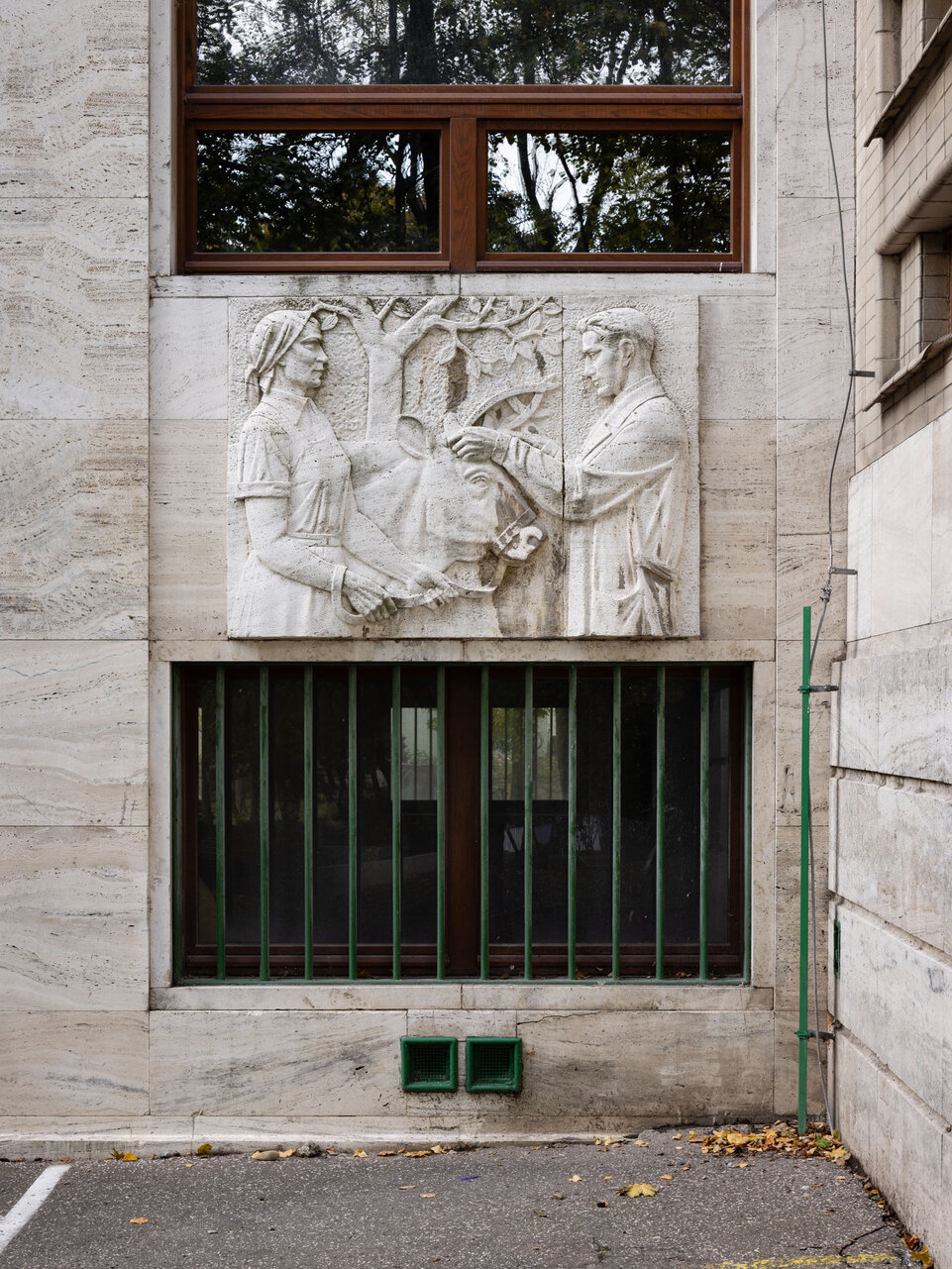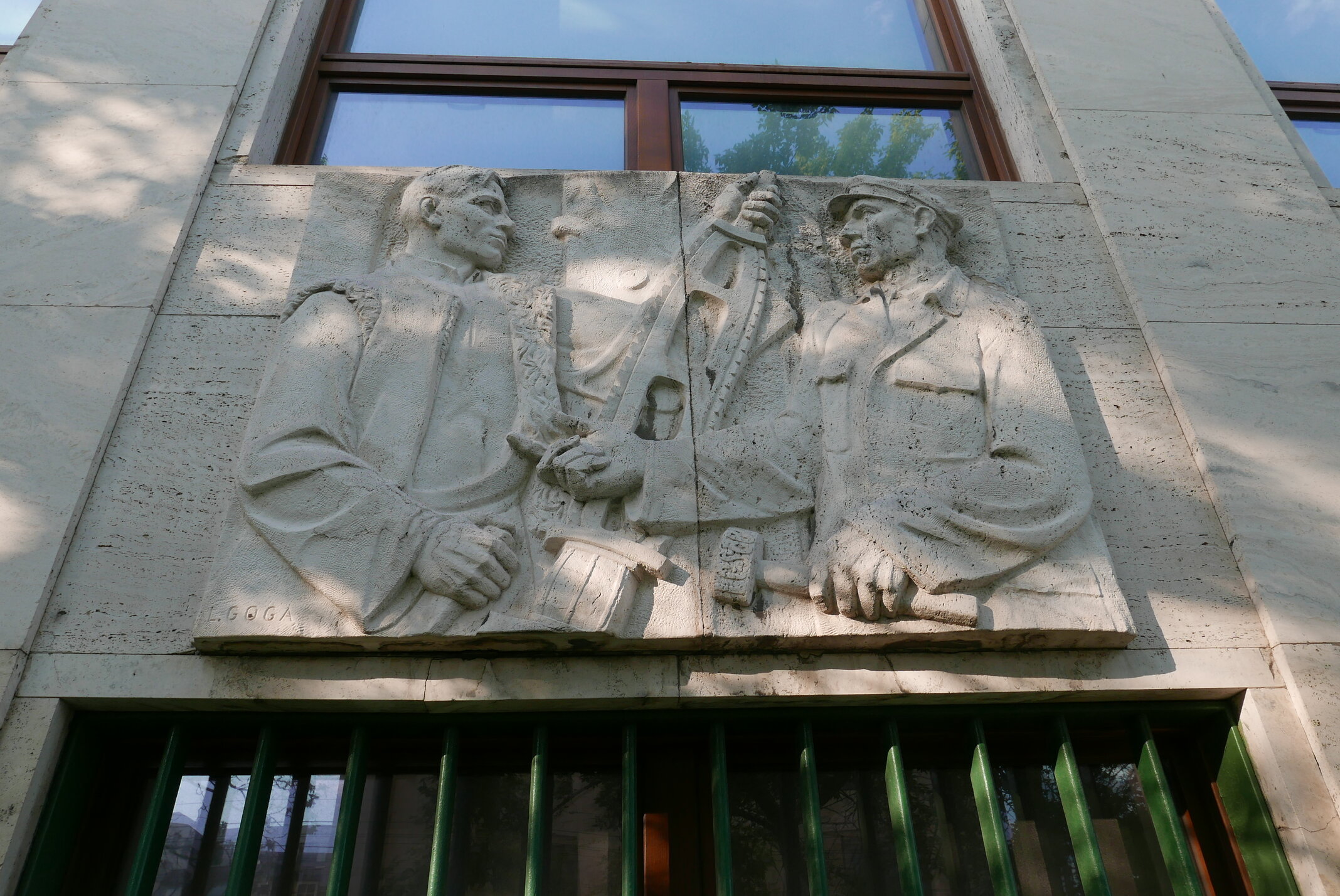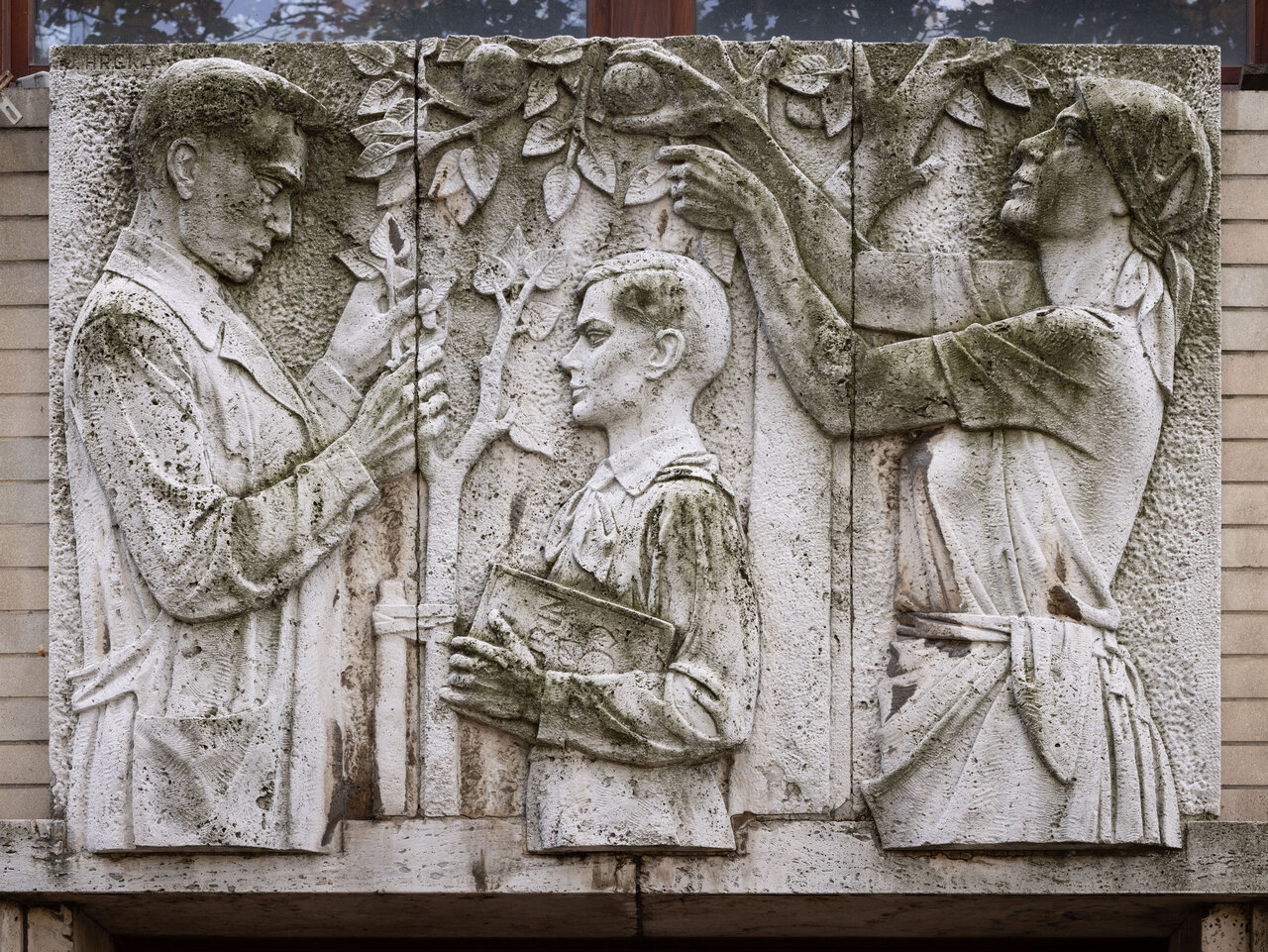The Pavilion of Theoretical Institutes of the Slovak University of Technology in Bratislava was built between 1948 and 1953 based on a project by the eminent Slovak architect Emil Belluš. The south wing of the building is decorated with a set of relief plaques that were mounted on the building between 1949 and 1953. Their creators were the most important Slovak sculptors of the 1950s.
There are twenty reliefs on the façade: eight on each of the western and eastern sides, three in the 1st floor windowsills on the southern side, and one above the building’s east entrance.
The collective theme is celebration of the professions that contributed most significantly to the building of a new society after 1948. These professions are symbolised by their distinctive attributes. Content of the reliefs, as well as the artistic method of processing (descriptive realistic depiction), conforms to the period of socialist realism in Slovakia during the first half of the 1950s. The composition is characterised by schematic representation; it features static scenes of two or three three-quarter figures (workers) depicted to the sides of the plaque, linked by the attributes of their profession.
The relief Textile Industry, southernmost on the west façade, was created by Otakar Čičátka.
It portrays two independently composed female figures. To the left, with profile averted, a woman holds part of a textile machine in her upraised hands. To the right, en face with her head turned to the right, a woman holds a box with spools of thread in one hand and raises spindles in her other hand.
ZZ
Research status as of 10 June 2023.



